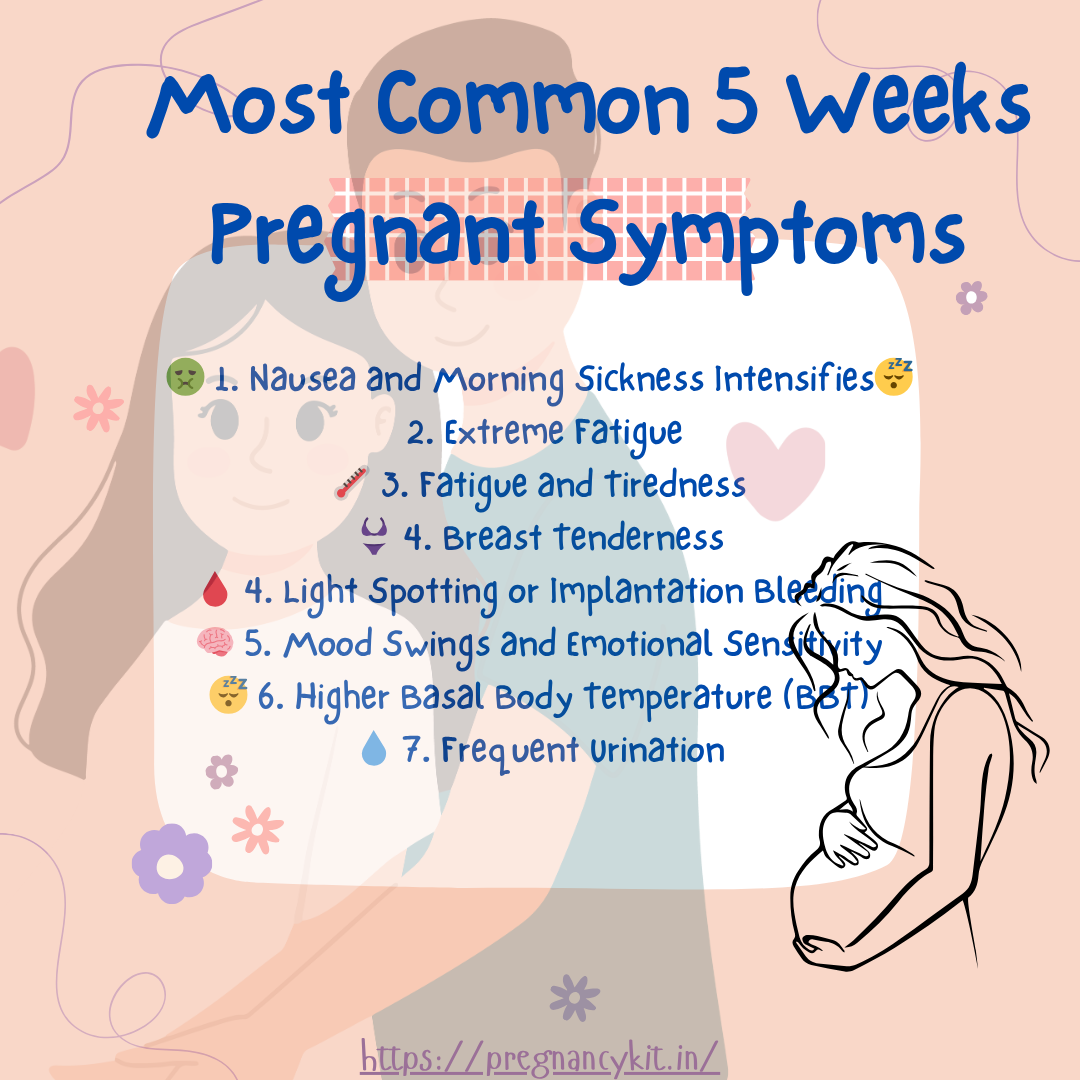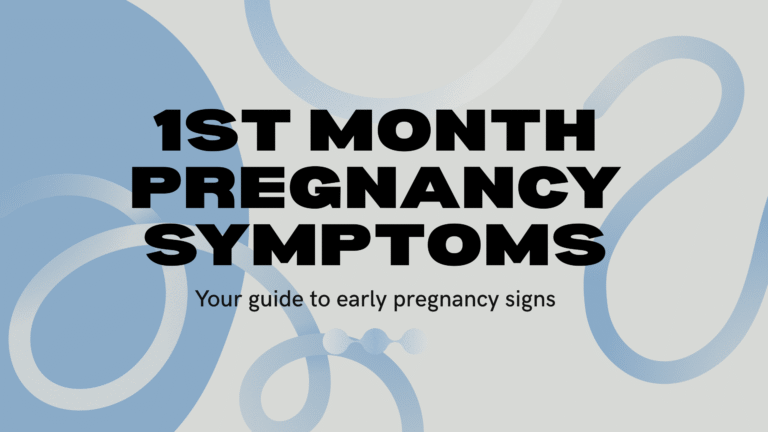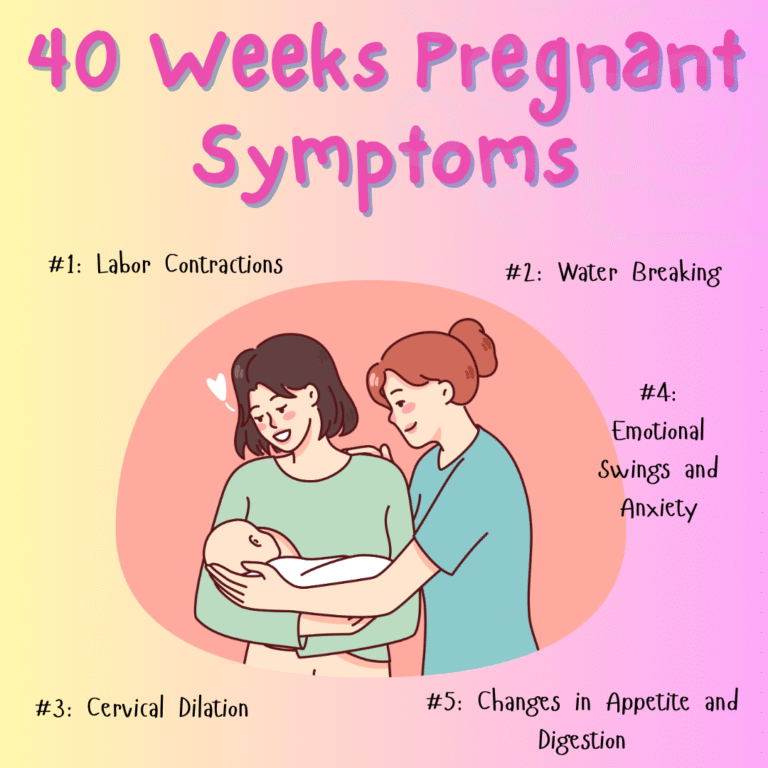5 Weeks Pregnant Symptoms: Understanding What’s Normal and What’s Not

5 Weeks Pregnant Symptoms
5 Weeks Pregnant Symptoms – By the time you’re 5 weeks pregnant, you may start to feel truly pregnant for the first time. Your body is now flooded with pregnancy hormones, and 5 weeks pregnant symptoms can become much more noticeable than in earlier weeks. This is the week when many women get their positive test and officially begin the journey to motherhood.
In this post, we’ll explore the most common 5 weeks pregnant symptoms, what’s happening inside your body, how your baby is developing, and the best ways to take care of yourself during this exciting but delicate stage.
🧬 What’s Happening Inside Your Body at 5 Weeks Pregnant?
At 5 weeks, your baby is no longer just a cluster of cells. It’s now an embryo, roughly the size of an apple seed (1.5 to 2 mm). The neural tube, which will develop into the brain and spinal cord, is already forming. Additionally, the placenta is working hard to deliver oxygen and nutrients.
Meanwhile, your body is producing high levels of hCG, progesterone, and estrogen—leading to many of the classic early pregnancy symptoms.
💡 Most Common 5 Weeks Pregnant Symptoms
Here are the most frequently reported 5 weeks pregnant symptoms, along with tips and explanations to help you manage them.
🤢 1. Nausea and Morning Sickness Intensifies
By now, nausea is likely more than just a slight queasiness.
Why it happens:
Rapid hormonal shifts—especially rising hCG levels—can upset your stomach and change how you react to food smells.
Typical experiences:
- Morning nausea (but it can happen anytime)
- Aversion to certain smells
- Trouble eating regular meals
Tips:
- Keep dry crackers by your bed
- Eat small meals throughout the day
- Sip ginger tea or lemon water
Learn more in our Foods to Avoid During Pregnancy guide to manage nausea better.
😴 2. Extreme Fatigue
Among the most common 5 weeks pregnant symptoms is constant exhaustion.
What’s causing it:
Your body is diverting energy to support early pregnancy. Meanwhile, progesterone acts as a natural sedative.
How to cope:
- Take naps whenever possible
- Eat iron-rich foods
- Stay hydrated and avoid caffeine
3. Tender and Swollen Breasts
If your breasts feel sore or fuller, you’re not imagining it.
Why:
Hormonal changes prepare the milk ducts and increase blood flow to your chest area.
What to expect:
- Darkening of the areolas
- Tingling or aching sensation
- Noticeable swelling or heaviness
Wearing a supportive bra can offer relief.
🩸 4. Light Spotting or Implantation Bleeding
Some women experience light pink or brown spotting around this time.
Why it happens:
When the embryo burrows deeper into the uterine lining, slight bleeding may occur.
When to worry:
- If bleeding is heavy or bright red
- If you have strong cramps along with it
Contact your doctor for reassurance and guidance.
🧠 5. Mood Swings and Emotional Sensitivity
Because your hormones are on the rise, you might feel unusually sensitive or irritable.
What you might feel:
- Sudden crying spells
- Anxiety or euphoria
- Difficulty focusing
How to manage:
- Practice mindfulness or gentle yoga
- Journal your feelings
- Talk to your partner or a trusted friend
🌡️ 6. Higher Basal Body Temperature (BBT)
If you’ve been tracking your BBT, it should remain elevated past ovulation.
Why:
Progesterone keeps your BBT high after implantation to support the uterine lining.
Tip:
Consistent high temps for 18+ days usually confirm pregnancy.
💧 7. Frequent Urination
This is one of the earliest and most consistent 5 weeks pregnant symptoms.
What causes it:
Increased blood flow to the pelvic area and growing hCG levels stimulate your bladder.
Advice:
- Don’t hold your pee
- Stay well-hydrated
- Avoid caffeine and sugary drinks
👶 Baby’s Development at 5 Weeks Pregnant
Here’s a sneak peek at your tiny one’s milestones this week:
- The embryo looks like a small tadpole
- Neural tube (brain and spinal cord) begins forming
- Heart and circulatory system are developing
- Tiny blood vessels start to grow
It’s hard to believe, but in just a couple of weeks, that tiny flutter will turn into a heartbeat you can see on an ultrasound.
🧘 How to Take Care of Yourself at 5 Weeks Pregnant
Taking care of your body now lays the foundation for a healthy pregnancy.
✔️ Start or Continue Prenatal Vitamins
- Folic acid (400–600 mcg)
- Vitamin D
- Calcium and Iron
✔️ Stay Away from Harmful Substances
Avoid:
- Alcohol
- Smoking
- High-mercury fish
- Undercooked meat
Check our Prenatal Vitamin Guide for daily dosage and safe brands.
🧪 Is It Time for a Pregnancy Test or Doctor Visit?
If you haven’t taken a pregnancy test yet, now’s a good time. Most women get a clear positive at 5 weeks.
Also, schedule your first prenatal visit around 6–8 weeks. Your doctor may:
- Confirm the pregnancy
- Calculate your due date
- Order initial blood and urine tests
🚨 When to Call the Doctor at 5 Weeks Pregnant
Call your healthcare provider immediately if you experience:
- Heavy bleeding
- Sharp or one-sided pain
- Dizziness or fainting
- Severe nausea with dehydration
Don’t wait—early care makes a big difference.
5 weeks pregnant symptoms can vary from person to person, but the most common ones—like nausea, fatigue, sore breasts, and emotional changes—are all signs that your body is adjusting beautifully to pregnancy.
Though things may feel overwhelming, this stage is just the beginning. Take it one day at a time, eat healthy, rest when needed, and embrace the miracle growing inside you. 💗
Internal Links for Continued Learning
About The Author
JYO JOURNEY
PregnancyKit – to provide real, honest, and easy-to-understand information for women who might be wondering, “Am I pregnant?” or “What should I expect now?” Every guide I write is based on what we wished we had known during our own journey.
Through PregnancyKit, I want to help women feel supported, informed, and confident from the very first symptom. Because I believe every woman deserves clarity, care, and a little less stress during one of the most important journeys of her life.



8 thoughts on “5 Weeks Pregnant Symptoms: Understanding What’s Normal and What’s Not”